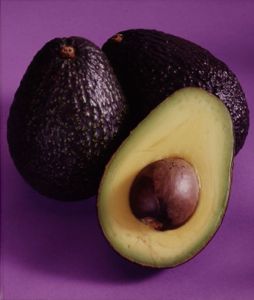Most Americans Still Confused about Good vs. Bad Dietary Fats
01 May 2014
 Which good fats to eat and which bad fats to avoid? There’s room for more education.
Which good fats to eat and which bad fats to avoid? There’s room for more education.
Despite years of effort by numerous organizations to help the public understand the pros and cons of consuming different types of dietary fats, a new survey by the Hass Avocado Board (HAB) reveals that most Americans are still unclear about the definition and role of “good” and “bad” fats.
In the HAB survey of more than 1,000 adults, nearly half (42%) of people incorrectly thought that all fats play a role in increased cholesterol levels; when “don’t know/unsure” responses are included, the number increases to 51% of people. In addition, more than one-third of people responded inaccurately that monounsaturated fats and polyunsaturated fats are bad and should be reduced or eliminated from the diet.
“It is clear from the survey that more consumer education is needed on the differences between good and bad fats, and the role they play in people’s diets,” said Penny Kris-Etherton, PhD, RD, Penn State University. “The different types of fats can be confusing to consumers, but all fats are not created equal, and the impact on one’s health can be significant.”
The results are based on two national probability samples of 1,008 telephone interviews among 504 men and 504 women 18 years of age and older living in the continental United States, conducted Feb. 13-16, 2014. The survey was conducted by CARAVAN®, an omnibus service of ORC International.
According to the U.S. Food and Drug Administration, saturated and trans fats raise LDL (“bad”) cholesterol levels in the blood, thereby increasing the risk of heart disease. Dietary cholesterol also contributes to heart disease. Unsaturated fats, such as monounsaturated and polyunsaturated, do not raise LDL cholesterol and are beneficial when consumed in moderation. Therefore, it is advisable to choose foods that contain naturally good fats and that are low in saturated and trans fats and cholesterol as part of a healthful diet.
How Informed Are We? Less than one-third responded that they feel more educated today about which foods to eat and which to avoid. Perhaps even more concerning, one-quarter (26%) say they do not really pay attention to this type of information.
Trans Fats. Eighteen percent of people mistakenly think that trans fats are good fats. The number increases to 30% among African Americans.
What Are the Good Fats? Fewer than four people in 10 correctly identified monounsaturated fats (39%) and polyunsaturated fats (37%) as good fats.
Sources of Good Fats. People mistakenly think the following foods contain good fats: spinach (79%), sweet potatoes (71%) and kale (62%).
Men vs. Women. Women (76%) try harder than men (67%) to make some effort or a strong effort to eat more foods high in good fats. More women (87%) than men (80%) know that avocados are a source of good fat.
“Good fats, like monounsaturated and polyunsaturated fats, are an important part of a balanced diet,” said Harley Pasternak, celebrity fitness trainer and nutrition expert. “Protein, fiber and fats, like the naturally good fats found in avocados, are a good way to keep you full between meals.” Pasternak is working with HAB on its “Love One Today” campaign promoting awareness of the benefits of eating fresh avocados.
According to the Dietary Guidelines, when eaten in moderation and used to replace saturated or trans fats, unsaturated fats can help to reduce blood cholesterol levels.
Foods That Contain Naturally Good Fats
Foods containing naturally good fats include avocados, nuts and fish high in omega-3 fatty acids. More than 75% of the fat in an avocado is unsaturated, making it a great substitute for foods high in saturated fats. The avocado is virtually the only fruit that has monounsaturated fat. In addition, avocados are cholesterol free.
“It is a misconception that you should not eat avocados because they are high in fat,” said Kris-Etherton. “Avocados can fit into a wide range of healthy eating plans.”
Avocado consumers already know a bit about healthy eating, as they more closely adhere to the Dietary Guidelines for Americans than those who do not eat avocados, as measured by the Healthy Eating Index (HEI), according to the National Health and Nutrition Examination Survey (NHANES) released in 2013.
For more information on good fats and avocado recipes, visit www.LoveOneToday.com/whygoodfats or follow HAB on Facebook, Twitter, Pinterest and YouTube.
